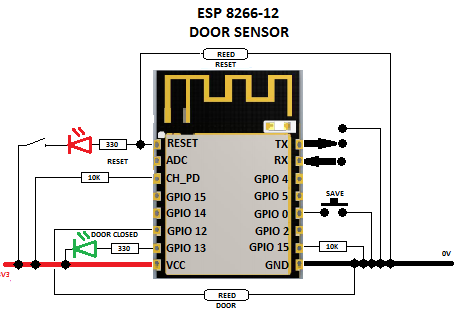So you mean 1 week or 2 weeks or more?
@speed57 Google is our friend  (unfortunately, so is math
(unfortunately, so is math  )
)
http://www.digikey.ca/en/resources/conversion-calculators/conversion-calculator-battery-life
800 / 1 * 0.7 = 560 Hours aprox. so depending on “stuff” (thus the * 0.7) probably between 3-5 weeks
I agree with that google stuff ![]() but my problem is math we are not good friends but since blynk I try to understand it
but my problem is math we are not good friends but since blynk I try to understand it ![]() .
.
thanks @Gunner short cuts makes me understand more faster than google ![]()
Hello
Here I am, the friend of Google.
I’m enjoying noticing that I’ve arranged a reason for everyone to talk.
I would like to tell you that I still can not get those blessed 10μA. Something is wrong but I will continue to search until I realize what it is.
Anyway, thank you for the interventions you have made and I am going to take advantage of some suggestions that have been made here to understand more about this subject.
Hang in there… every hardware device is a little bit (or a lot) different. Something as simple as firmware version or the types of support circuitry can make all the difference to current draw. Let us know how it works out.
If your ESP has a power LED that stays on, your power consumption will be fairly high. You have to remove it from the board to achieve the low micro amp power consumption.
Hello everyone.
To play safe I bought another ESP 8266-12 (actually five) and I came to two conclusions:
First - The ESP I was using is not good. Either because of manufacturing defect or because of my “experiences”, it has a very high consumption.
Second - Consumption is highest when GPIOS are "high"after ESP goes into deep sleep.
So I changed the sketch to work backwards. Instead of the closed door information being “high” became “low”.
And everything is all right.
Each time the door opens or the door is opened I receive a notification informing what happened and the volts of the batteries.
Maybe due to my multimetre defect, the consumption is not stable, but varies between 10 and 20 microA in deep sleep.
I installed the device for two weeks with two 1.5V alkaline batteries and continues to work perfectly with 3.1v information for the BLINK. Let’s see how long they last.
I find the second conclusion a bit strange, but it actually solved the problem.
I also discovered that the circuit I made does not work with an ESP-01 because when the GPIO 2 is low and reset, everything hangs and does not work.
I do not know why.
By the way, for those interested, this is the circuit I’ve done.

The LEDs are optional, and do not have much influence on the consumption because they only light momentarily: the green lights when the door is closed but immediately turns off when the ESP goes into “deep sleep” and the red when the magnetic goes through the reset reed. I just left the red.
The initial idea of the LEDs was to facilitate the tuning of the reeds with the magnetics. The magnetics can not be very strong because as the reeds are very close to each other the desired effect is not achieved. Do not forget that the magnetic door information must be aligned with the respective reed and the reset must be misaligned so as to only activate the reset reed momentarily when the door moves in any direction.
And, that’s all.
If you need any help, just let me know.
Thanks for your contribution.
Just FYI, sharing information.
I am using ESP8266-12E nodemcu dev kit with DHT22 and deepsleep (sleep 5 minutes, measure temp and humidity, sleep 5 minutes, …)
This is how the board exactly looks like:

When I measure current it was 75mA when wake up and around 2,5mA when in deepsleep. It is powered by 4 AA rechargable NiMH batteries (4x 1,25V = 5V). I also expected lower current consumption when in deepsleep, but for now I can live with it.
@helpfinder The drain you see comes from the usb serial adapter and the regulator which are embedded in the nodemcu